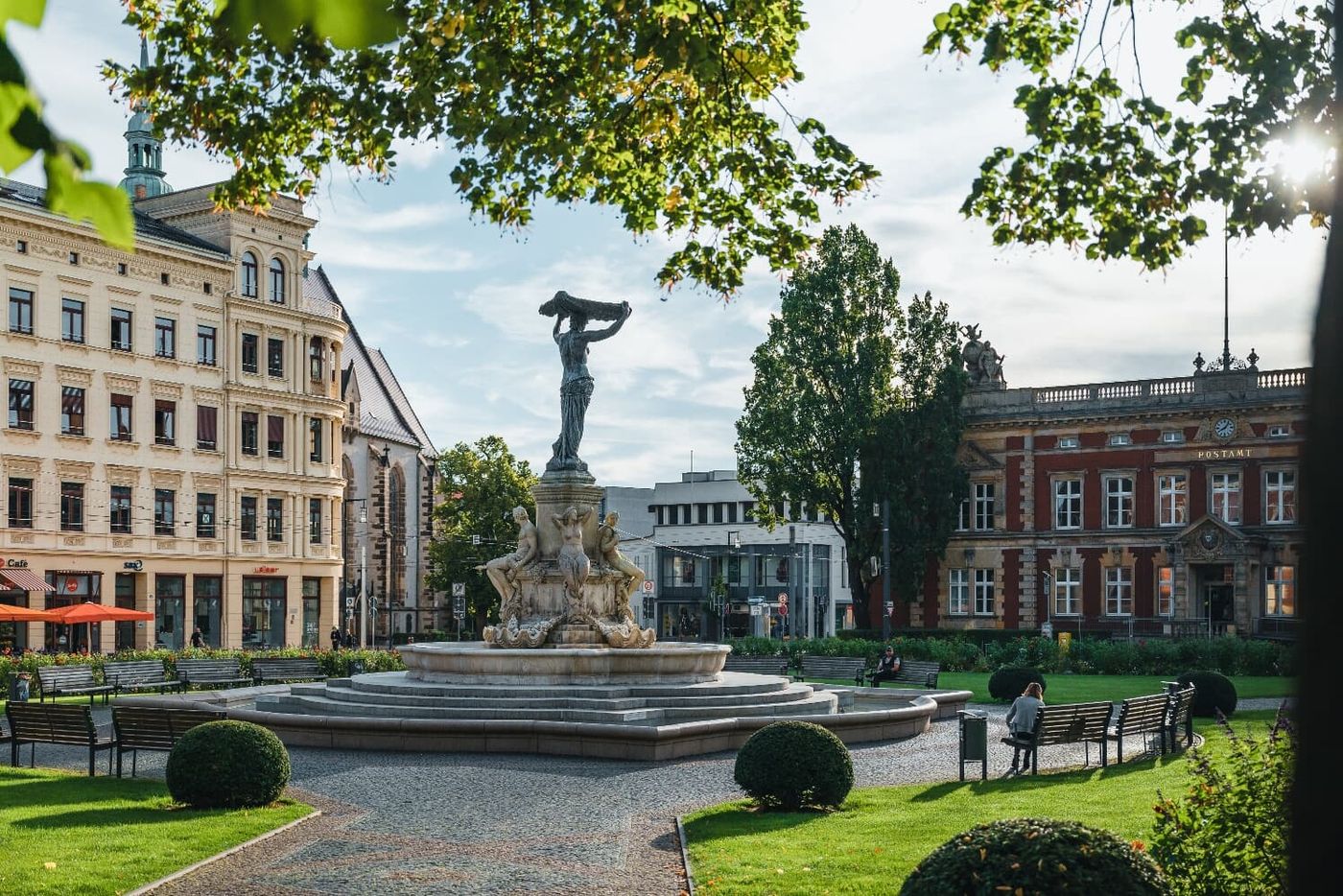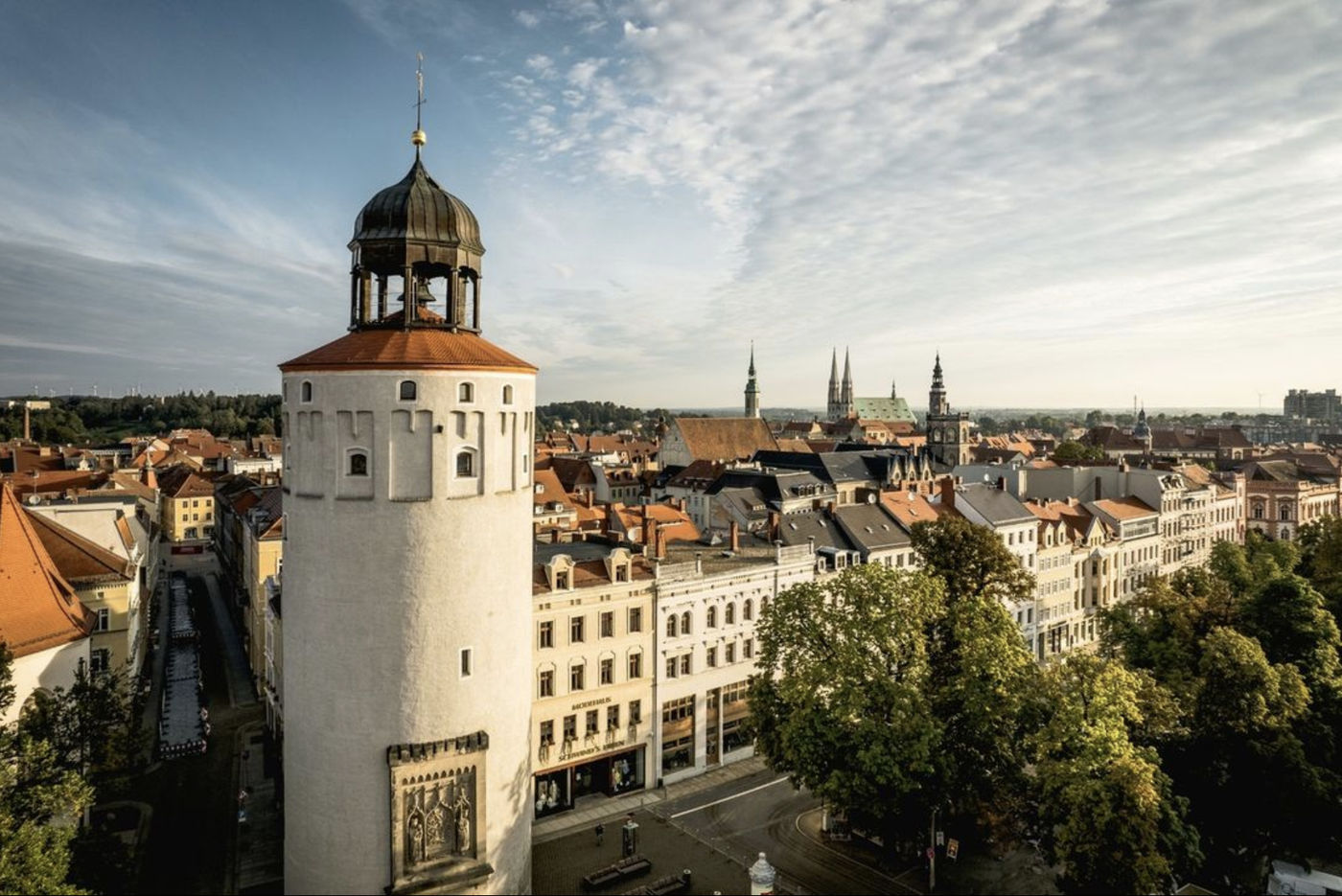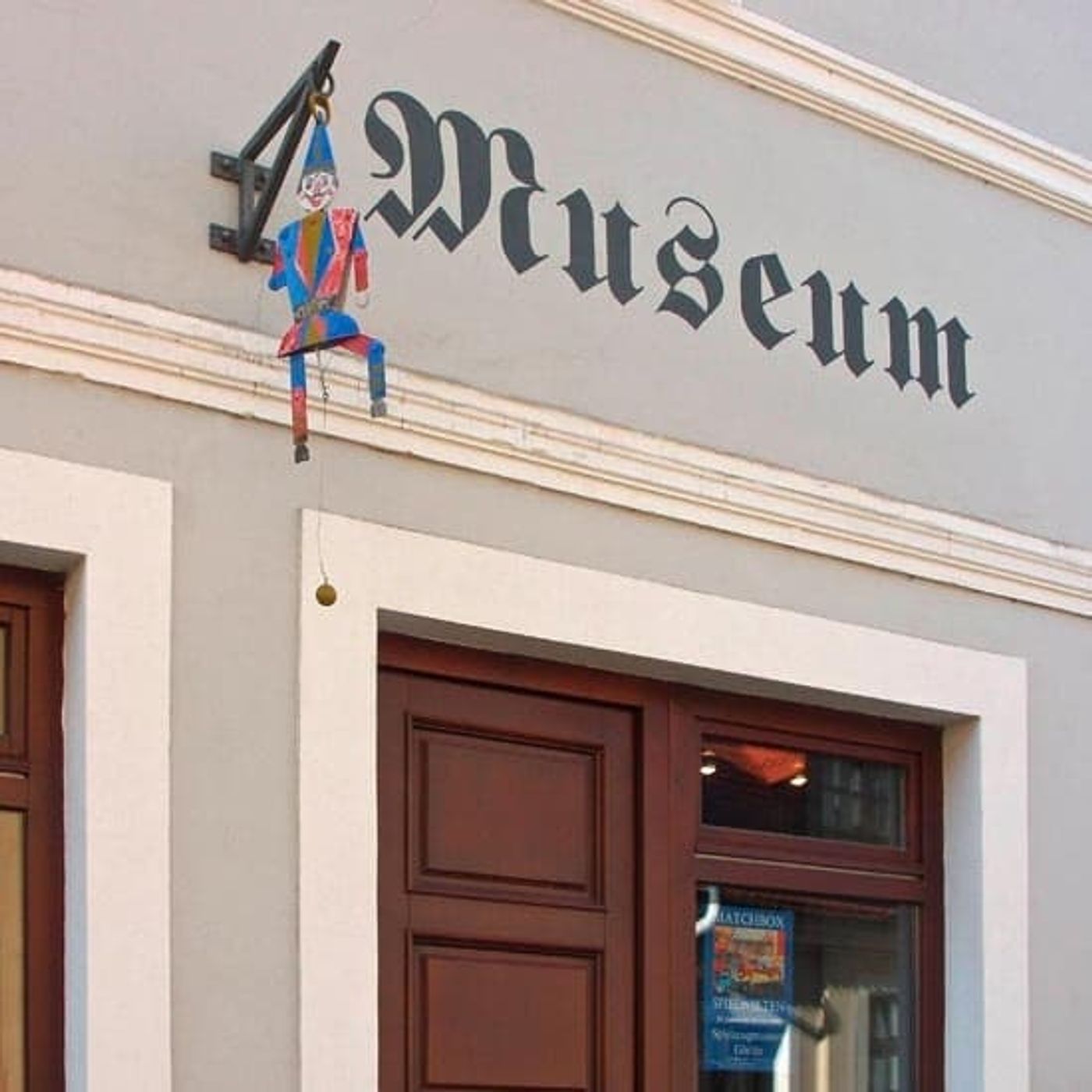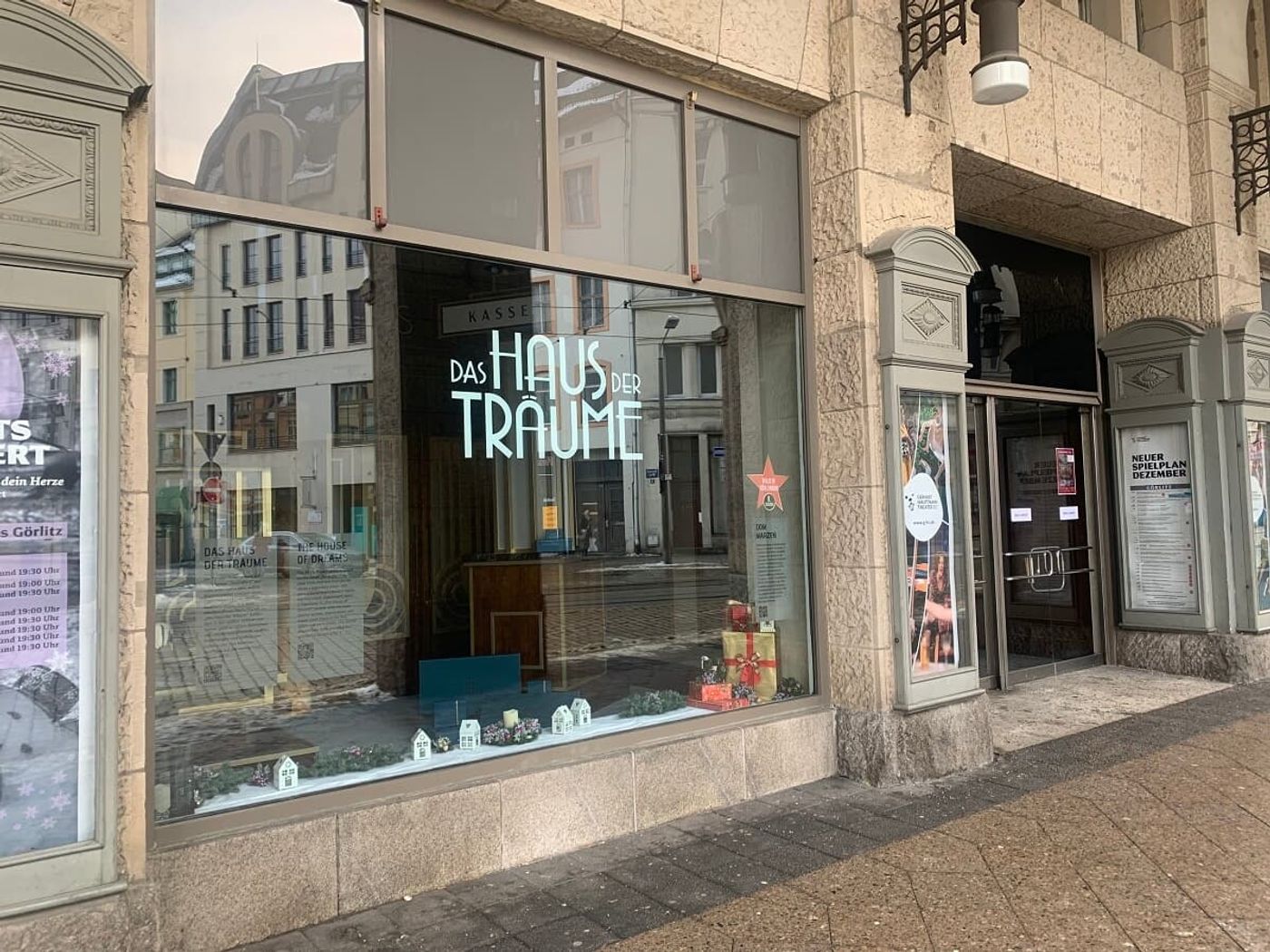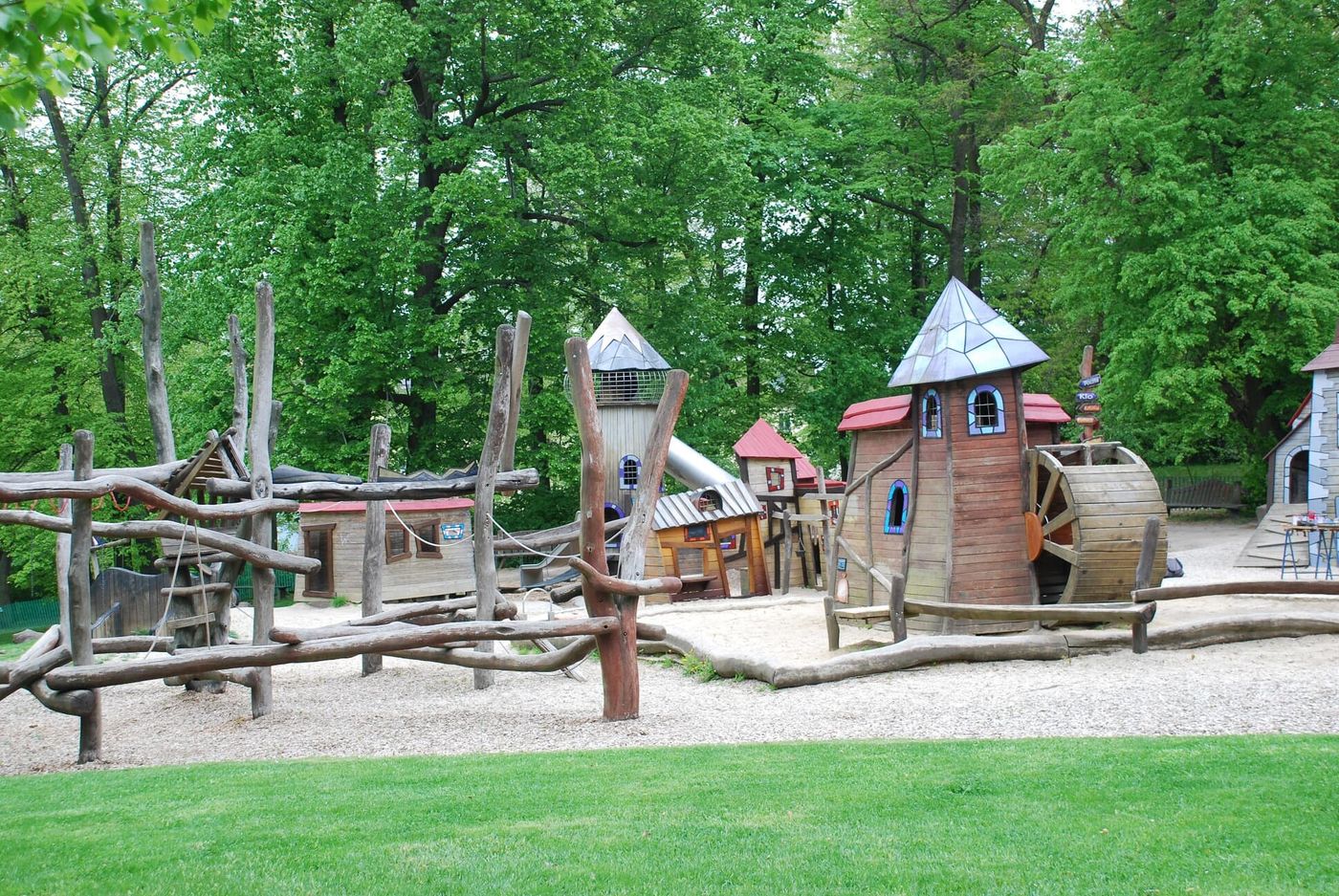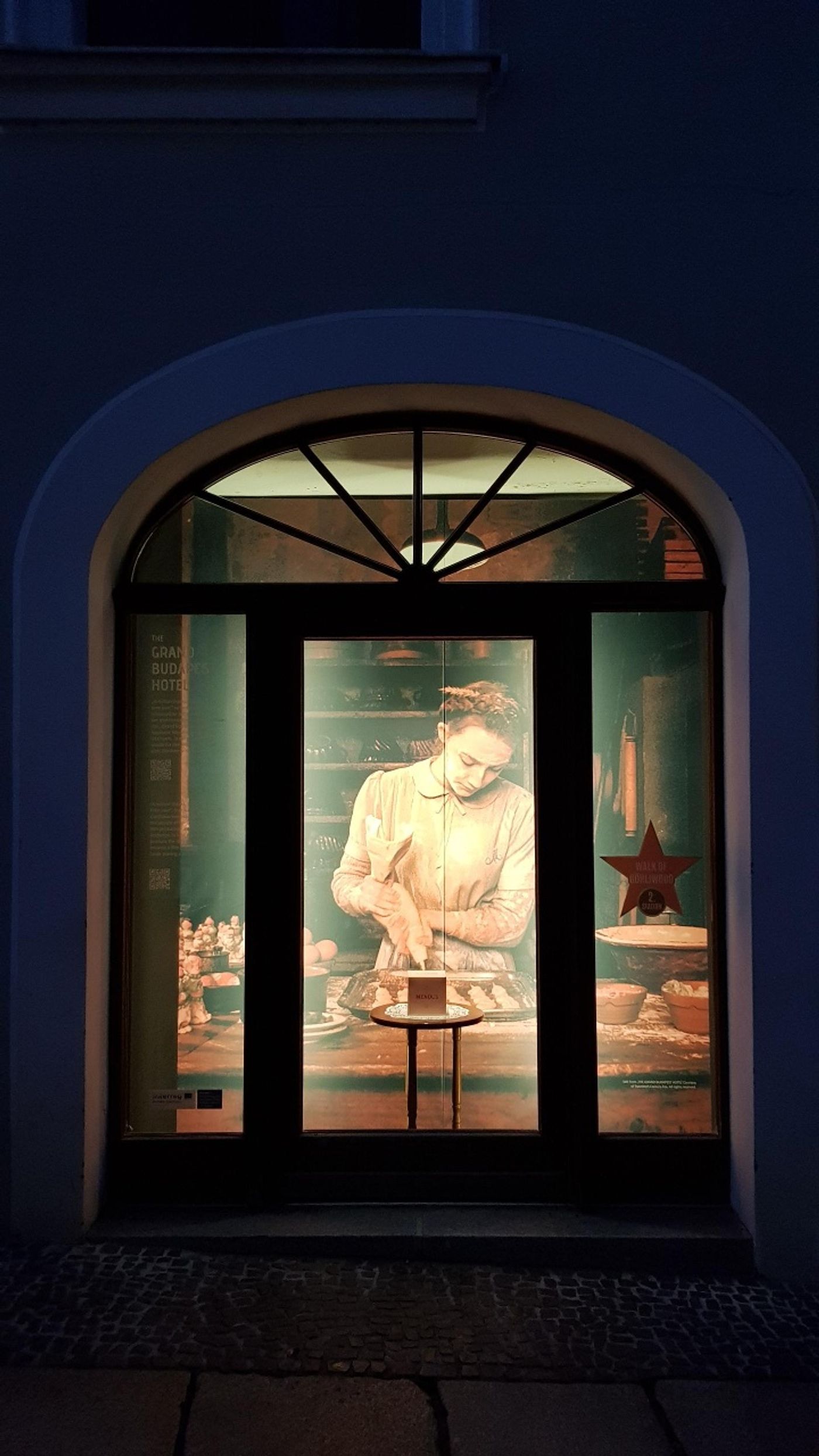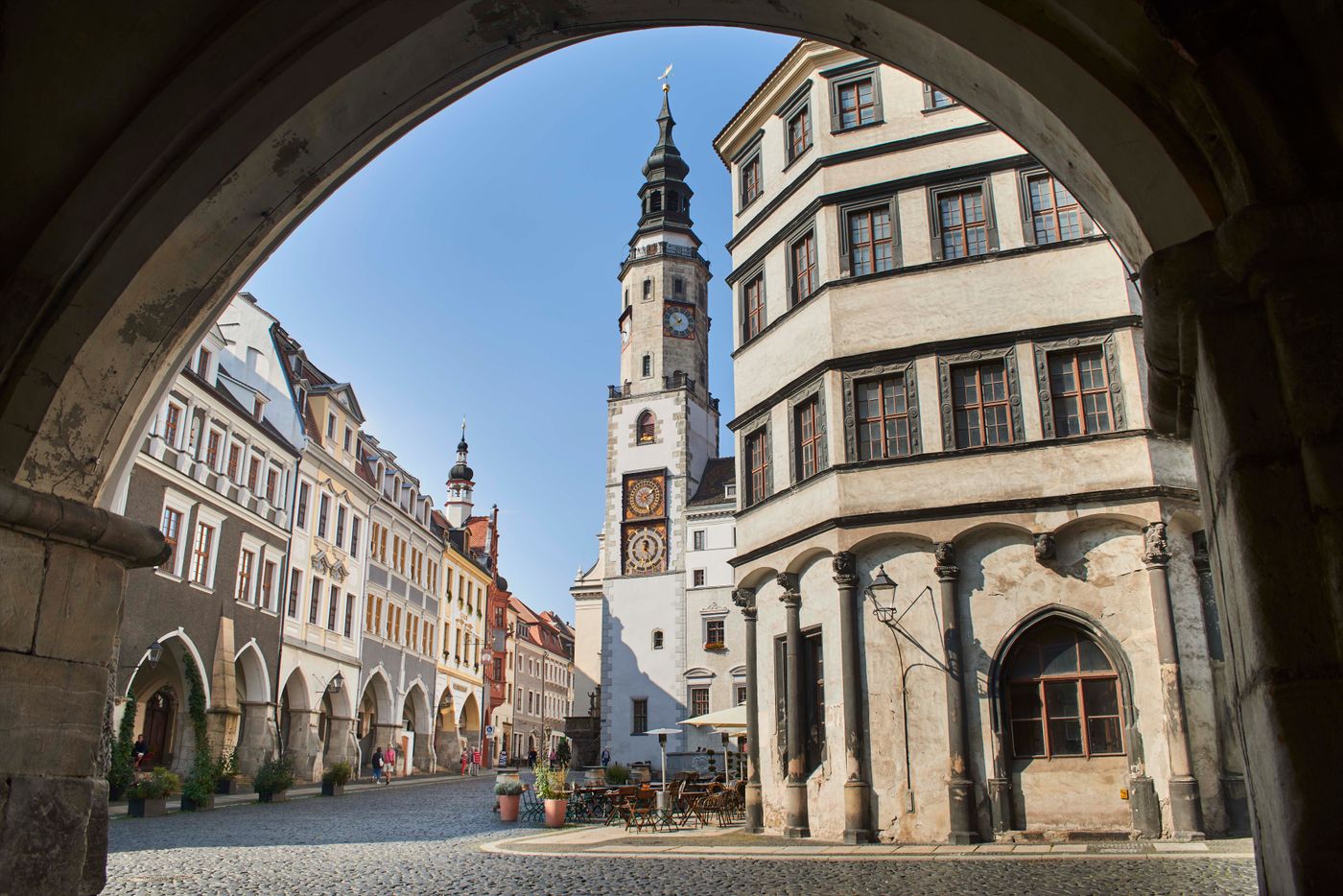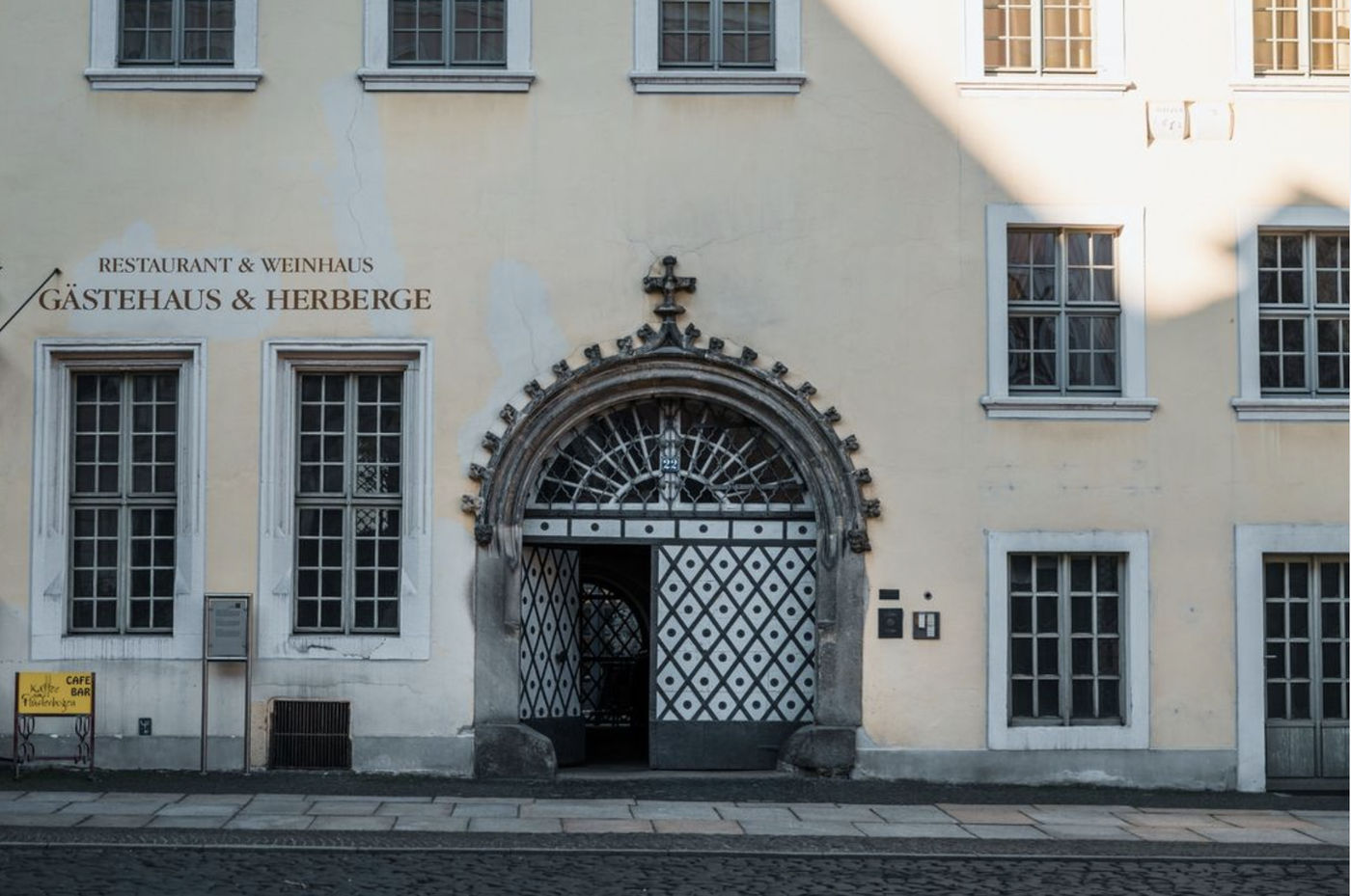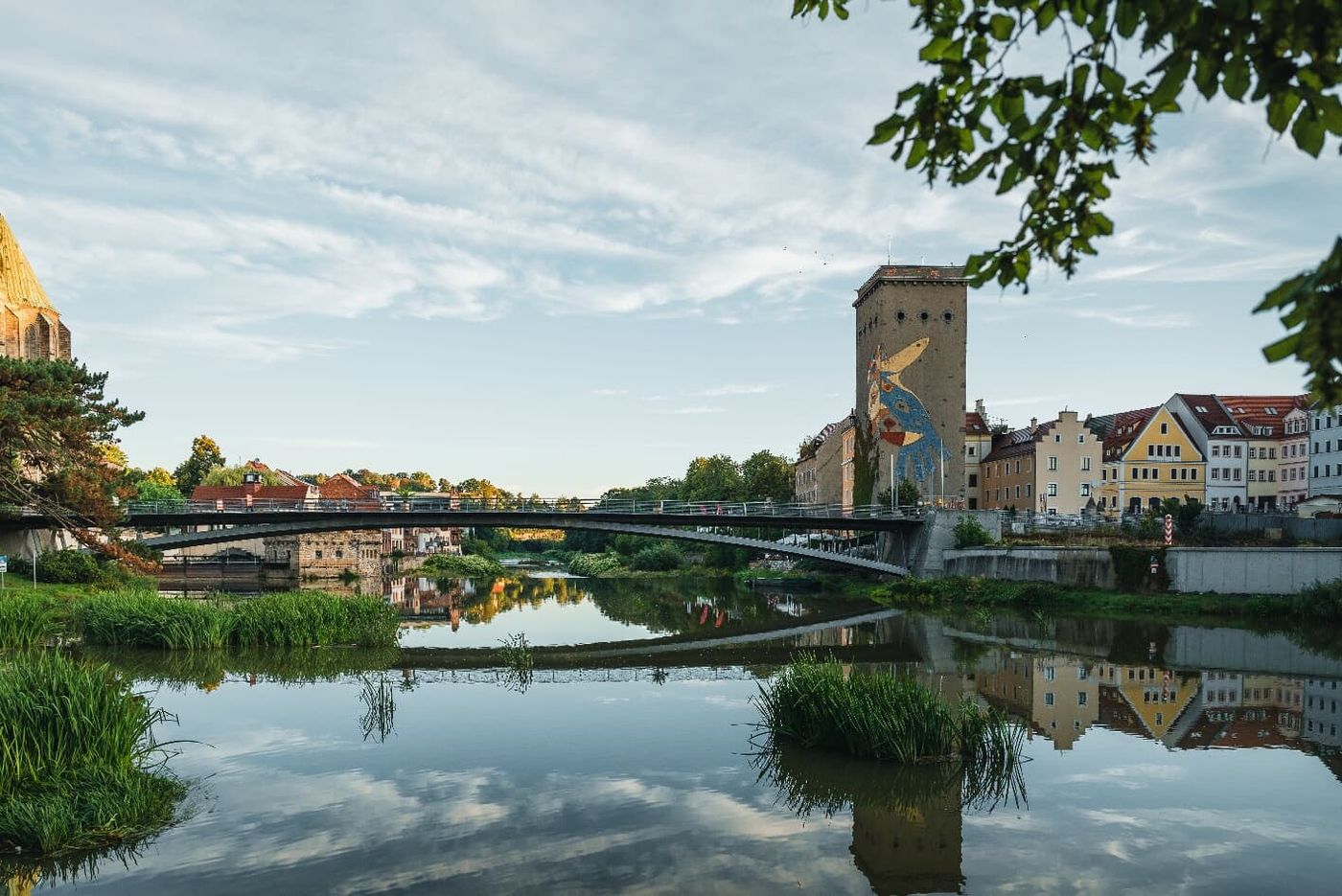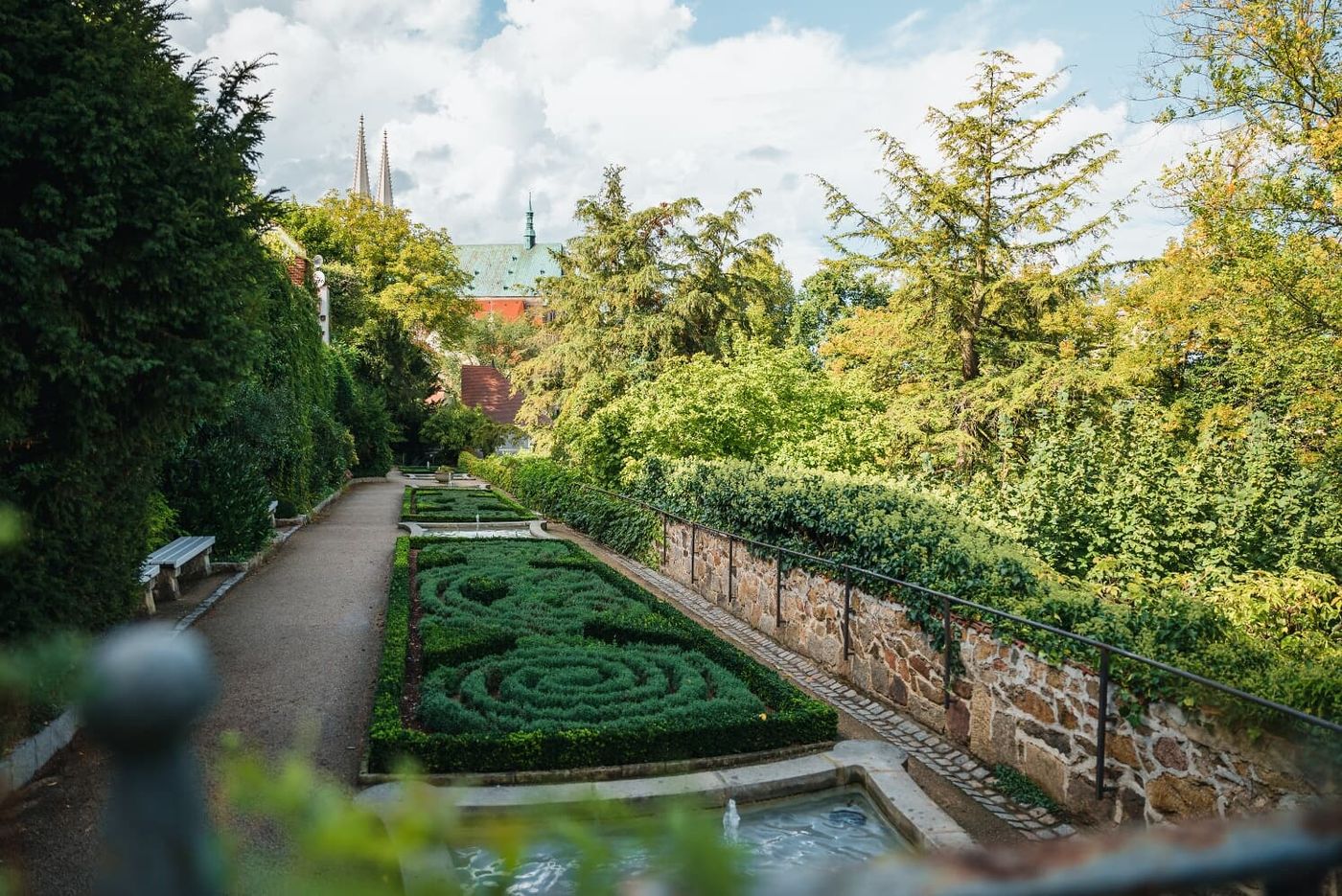



Ochsenzwinger
The entrance gate to the Ochsenzwinger is marked by the remains of the once mighty Ochsenbastei. This estimated a secondary exit from the city and consisted of two interconnected bastions, through which a gate allowed the passage and especially the cattle drive from the pastures (now the city park) and to the slaughterhouse located outside the city at the mouth of the Lunitz.
In 1834, the bastion facing the Neisse River and the gate were demolished for traffic reasons.Today, the tower is a meeting place for the Interessengemeinschaft Denkmalpflege e.V. The garden opens after the staircase with the fountain terrace. This part of the Ochsenzwinger was created as a garden in baroque design between 1962 and 1963 according to the plans of the then garden director Henry Kraft and with the gratuitous help of the citizens of Görlitz within the framework of the National Reconstruction Program. The restoration, which was in keeping with the preservation order, was completed in 1999. Six fountain basins stand between the inner and outer city wall and form the creative center of the complex with inserted ornamental beds. The ornaments on the beds result from the planting of edelgamander and boxwood. The fountain terrace of the Ochsenzwinger is the only green space in Görlitz that was modeled on the Baroque style. From the adjacent square to the south and somewhat higher, one looks back over the fountain terrace to St. Peter's Church.
A narrow staircase leads to the upper terrace. The open space, created in the 1960s, underwent a deliberate contemporary redesign in 2000. Spatially framed by a pergola along the south, east and north sides, the visitor is first offered a view of the magnificent courtyard facades of Kränzelstraße. An olive willow grows in the lowered area; together with the perennial bed surrounding it and the small lemon trees and decorative lilies that have been set up, it is intended to convey a southern flair. The design of the upper terrace was honored by the Association of German Landscape Architects in May 2001.The landscaped southern part of the garden adjoins the fountain terrace. Here, various woody plants and perennials alternate with lawns and seating areas. The striking columnar oaks and yews date from Henry Kraft's time. Towards the east, a view opens up to the striking facade of the Jacob Böhme House on the Polish bank. A few steps away is another fortified tower, the Swedish Ensign. Its name commemorates the Swedish Ensign Löst, who in 1641 unsuccessfully defended a neighboring tower, which was destroyed, against the imperial troops. Further on, you get to the exit Bergstraße, and via Jakob-Böhme Straße back to the city center.
Show originalgoerlitz.de
More moments in the area
Discover Görlitz 